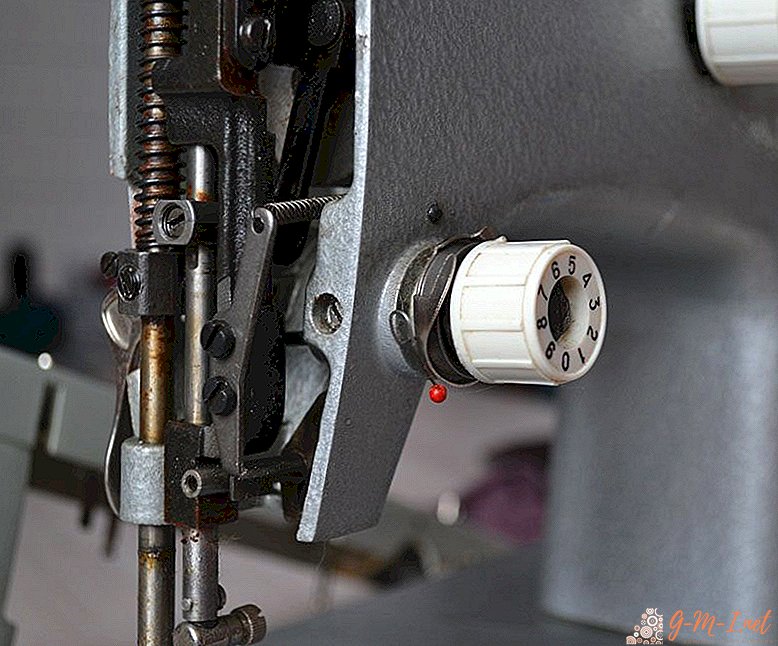 A correctly set thread tension setting on the sewing machine is very important to create an even tie on both sides of the fabric. Despite the importance of such a setting, even professional seamstresses in some cases try not to even touch the stretch adjuster. Customization may seem like a daunting task, but while understanding even the basic principles, you can do it yourself on any model of sewing equipment.
A correctly set thread tension setting on the sewing machine is very important to create an even tie on both sides of the fabric. Despite the importance of such a setting, even professional seamstresses in some cases try not to even touch the stretch adjuster. Customization may seem like a daunting task, but while understanding even the basic principles, you can do it yourself on any model of sewing equipment.
Sewing and threading in a sewing machine
In order to actually make sure that the reason for the ugly screed is precisely the incorrectly adjusted thread tension, you need to check the following:
- Correct installation. This item is especially important, since most housewives install the wrong thread. Perform the check using the instructions that came with the machine, it describes the only correct refueling option.
- Serviceability of the basic mechanisms. It is necessary to make sure that all mechanisms are sufficiently lubricated, and during their movement there are no jolts or extraneous noise.
- The volume of thread that is wound on the spool - it must be the same. In addition, you need to pay attention to the diameter of the thread and the needle used.

Upper thread
The regulator looks like a rotating cylinder, it can be located on the side or on top of the housing. All information where it is located exactly can be read in the instructions.
You can find out the required level of tension using a test seam. If the screed has the correct appearance, tension adjustment is not required. If during sewing, the tie stretches the weave with the bobbin thread to the top of the fabric, then the tension balance has been moved to the top of the yarn, it needs to be loosened. The same situation with very low tension - the plexus sections will be noticeable, but on the reverse side of the material.
Given which of the above options is marked on the line, you need to increase or decrease the stretch.
Attention! No need to twist the adjusting wheel very sharply. Gradually increase or decrease the level of tension until the screed is level.

Bobbin thread
The stretch is due to the shuttle mechanism. To find out the level of tension, you need to pull out and hang the shuttle, holding the thread that comes out of the spool by the edge. Ideally, if the shuttle begins to fall no more than 4 cm, and at the same time stops the rotation of the spool.
If it does not fall at all - the stretch is very strong. If it quickly drops and at the same time unwinds the spool, the tension is weak. Adjustment is made with a bolt.
Considering whether it is necessary to increase or decrease the tension, it is necessary to turn it with a small screwdriver in the corresponding direction. Perform a test coupler to make sure that the tension is normal.
It is only necessary to start adjusting the lower part when the upper part has been adjusted. Most often, if the screed is uneven, then the reason is in the upper node.
Reference! To conveniently determine the results during the execution of the stitch, you can use threads of different colors that will contrast with each other. This will help to know exactly what stretch you need to adjust.

General recommendations
Do not forget that if the upper and lower threads of different thicknesses are used, this sometimes requires additional adjustments. It is best that the threads are from one bobbin. The mismatch of the needle with the diameter of the thread also leads to crooked strings.
The set row size also significantly affects its quality. A very small length of this indicator leads to constant clogging of the material under the needle plate.
For effective work, any housewife needs to know the features of all varieties of threads:
- Woolen threads have a very thick thickness. A special needle and tension adjustment will be required.
- Polyester is a universal material. It is convenient to use during sewing and solving various problems.
- To work with jeans, you need a thick needle that does not break during the stitching process.
It is best to record the adjustment adjustment that was made when sewing specific things. Start a notebook for yourself and mark all the settings in it. In the future, this will greatly simplify the task of regulating the thread tension.


Leave Your Comment